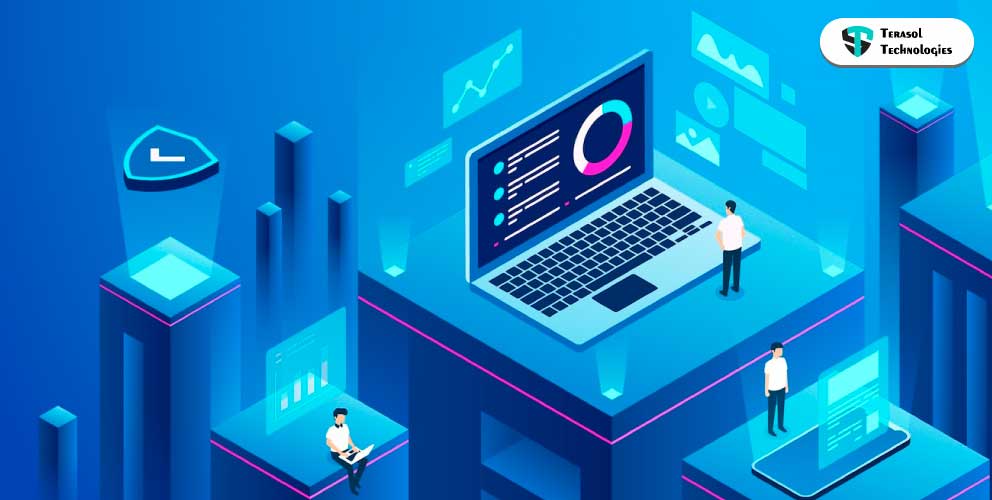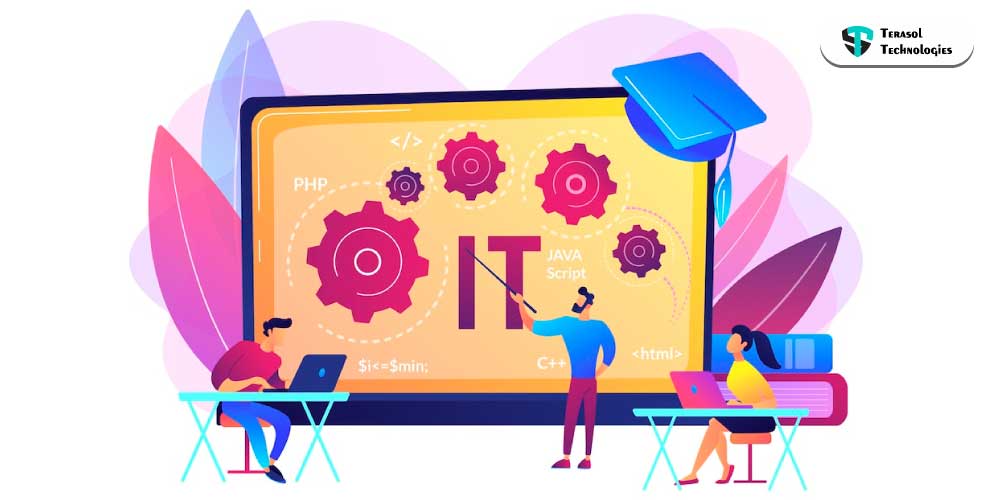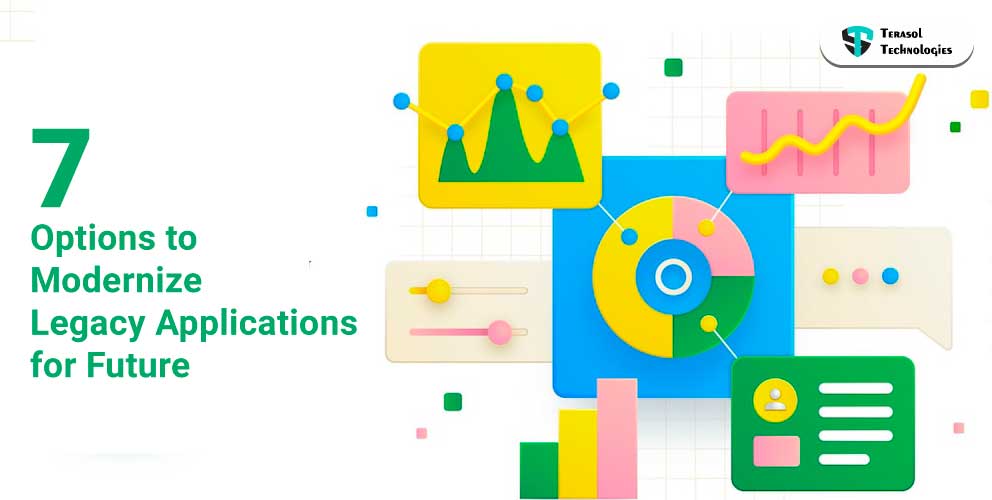Legacy Application Modernization- What, Why & Examples
Just like any other product in the market, every application and software has a lifecycle. Modernization is a process, not a destination.
Because of their reliance on outdated software applications, 90% of firms are unable to fully use the potential of digital technologies.
Being proactive when it comes to digital transformation is essential. Due to the rapid pace of technological change, altering skill set availability and cost, as well as changing business demands, the need for an enterprise modernization system spiked up.
After all, older software applications and technologies restrict your company's capacity to provide a digital-first customer experience and run its business.
According to a UN research report, the market for frontier technologies—which includes everything from blockchain and artificial intelligence to gene editing and micro-technologies—is predicted to reach $3.2 trillion by 2025.
However, you've surely heard that not every successful in-house software product can be effortlessly transferred to the cloud.
That's where software application modernization comes in, which involves repurposing your existing code and apps to meet various cloud compliance standards. Consider software application modernization as a way to take advantage of the efficiency of current applications while maintaining the security and familiarity of legacy apps.
But what exactly does the term "software modernization" imply?
Let's start with the basics of software modernization.
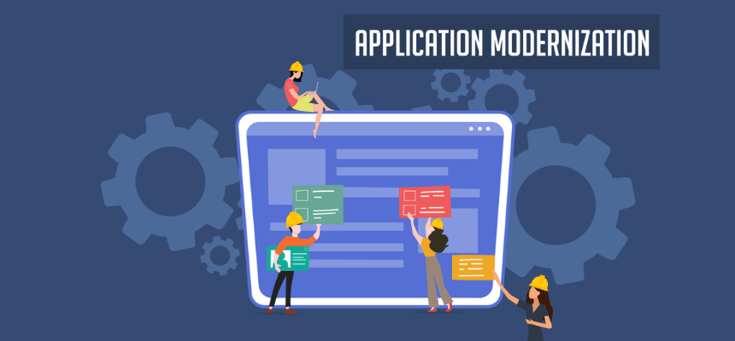
Software or Legacy Application Modernization: An Overview
The process of transitioning legacy systems into a new, modern environment is known as legacy modernization or legacy application modernization.
Organizations may minimize IT complexity and boost efficiency, build a data-driven culture, and improve flexibility across business processes by changing the old IT ecosystem into a new one.
For instance, moving a business IT environment from a traditional on-premises data center model based on mainframes to a cloud environment rich in microservices and containers.
Thinking of IT modernization? Let’s connect. Book a free call with our modernization team today.
Benefits of Legacy Application modernization
When you have the “old-school” software powering your business operations, you're raising your risk, increasing your costs, and reducing your agility.
So, let's take a look at the various advantages of updating your apps and software.
1. Allows you to create new features and services
It can be challenging for organizations to continue addressing the expectations of modern clients when existing software packages become outdated. Businesses can use application modernization services to generate new features and services that are more in line with their current status and future ambitions. These additional capabilities can be tailored to the needs of the company to guarantee that the old application continues to be useful.
2. Gain Competitive Edge
Another strong incentive for software modernization is competition. When competitors gain a competitive advantage in the market by using more effective business tools, it's essential to shift rapidly or perish.
3. Increase in Employee Productivity
The productivity of employees is one of the most crucial benefits of application modernization that is often underestimated. Application modernization can aid in the automation of jobs and the elimination of repetitive processes, allowing staff uses their time effectively.
End-to-end IT transformation, according to McKinsey, can have major positive effects on operations and efficiency.
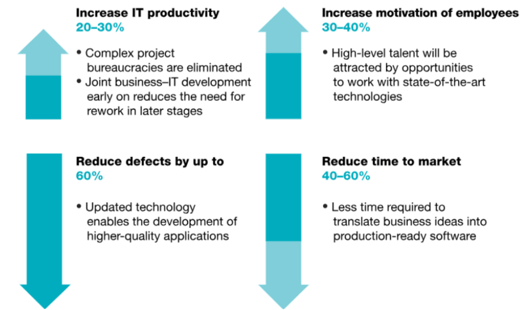
4. Gets Rid of Technical Debt
Maintaining the ‘old school’ legacy systems can be expensive. Operations and maintenance take up 80% of the IT spending.
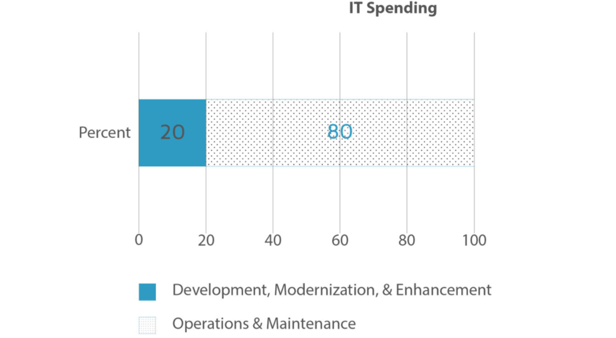
According to market research by Vanson Bourne, application modernization can result in a 13% reduction in operational costs and a possible increase in a yearly revenue of more than 14%.
So, with application modernization, you can minimize costs and increase your business's revenue streams.
5. Enhances the customer experience
What distinguishes your company or brand in this crowded marketplace?
It is the customer experience. A positive client experience is just as important as competitive pricing.
According to a study, 70-75 percent of customers are willing to spend more for an exceptional customer experience.
You can take advantage of the cloud environment with current applications. It's simple to get all of your data and information back whenever you need it. Your clients will be able to effortlessly browse around your system after legacy application modernization.
6. Easy Integration
.png?width=673&name=Application%20modernization%20(1).png)
The number of platforms connected and the complexity of IT landscape components (cloud, hybrid, and on-premise data centers) has increased. In commercial terms, agile "plugin" integrability is becoming a competitive advantage that helps in easy integration with devices and multiple applications.
7. Agility
Some legacy and traditional systems may not be able to handle the essential flexibility and speed to swiftly and efficiently deploy new code. Thus, the modernized legacy system will help the system to gain agility and flexibility in performance.
8. Enhancement of security
Many security measurements exist in legacy applications that must be monitored and updated in order to keep up with the latest cyber threat. However, failing to have a robust security plan in place to secure your organization and its data can result in a cyber-attack, causing you to lose customers and important data.
Application modernization, on the other hand, provides top-of-the-line security features that save time and money.
Although, when working with systems that are many decades old, legacy modernization may appear to be a simple and obvious decision—modernize and become more productive. But, as we all know, if something isn't broken, don't fix it. Proceed with caution before embarking on a massive modernization project that affects every single company process. There are several barriers to legacy application modernization that organization needs to overcome.
🏢 Check out Legacy System Modernization Approaches To Overcome its top 9 Barriers.
Why is Application Modernization Different from Development?
With modernization, you're essentially migrating and integrating existing code to the cloud. However, if there is too much-outdated code or technology, you'll have to rewrite — that is, start from scratch.
In many circumstances, new construction can be incorporated within a larger modernization project.
You could, for instance, lessen your reliance on a mainframe system by creating other applications to do its tasks. Similarly, replacing current software with microservices is required to shift to a cloud-native application.
Let’s take a look at the businesses that adopted legacy application modernization
Some well-known companies around the world that have effectively improved their business through legacy modernization are listed below:
Goldman Sachs Goldman Sachs, one of the world's greatest financial services firms, was facing a major challenge with its technology division. For financial institutions, speed of execution is vital for executing critical business processes smoothly. Legacy system modernization aided the banking behemoth in streamlining workflows, increasing developer efficiency, and improving customer experience.
Claro Claro, one of Latin America's oldest and largest telecommunications companies, teamed with Wovenware to upgrade its aging software infrastructure. The corporation moved away from paper-based legacy processes and toward fully automated, streamlined operations.
Get started with legacy application modernization today
Owning an out-of-date software application is not the same as owning a vintage car. In the next years, your ten-year-old systems will not bring any value to your company. Legacy application modernization will benefit your company in a variety of ways. Terasol Technologies is a software and web development firm that offers a broad range of services. We've assisted a number of businesses in modernizing their legacy systems.
Reduce your time-to-market and enjoy all other perks of legacy application modernization by transferring your software to the cloud in a few weeks. Reach out for a virtual coffee and let's discuss together how we can help you modernize your application software system.
